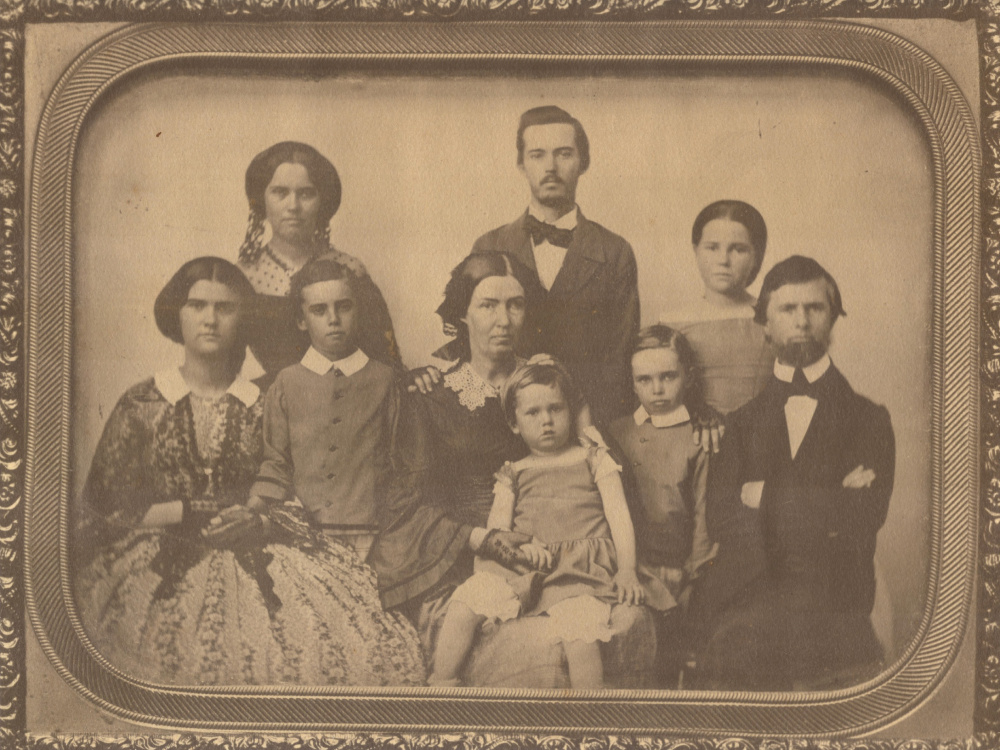Amos & Juliette Cooke

Excerpted from Partners in Change by David Forbes, Ralph Thomas Kam, and Thomas Woods (2018) (p.195):
Amos and Juliette were married at Danbury, Connecticut in 1836 and ten days later, as members of the Eight Company of missionaries, sailed from Boston in the barque Mary Frazier and arrived in Honolulu on April 9, 1837, after a voyage of 116 days.
Both Amos and Juliette began teaching shortly afterward. Moses Kekūīwa, son of Kīnaʻu, and Mataio Kekūanāoʻa became a student in Amos Cooke’s “select school” in 1839. A few months later, kuhina nui (premier) Kīnaʻu died after a short illness. Shortly after her death, the Cooke’s were asked to teach the young chiefs.
The school began with six students (later increased to sixteen), and for nearly a decade Amos and Juliette were at the head of the school where they taught the young chiefs, five of whom would become Hawaiian monarchs, one a “co-ruler,” one the consort of a monarch, and another the founder of Kamehameha Schools.
Amos Cooke has been criticized for his severe discipline a the Chiefs’ Children school. Fearing that they would face unruly young royals unaccustomed to discipline, the Cookes were careful to gain assurance from the aliʻi that their authority over the students and discipline would be respected and supported. Receiving it, they moved forward with the school. It is true that he used physical means to gain obedience, but that was not unusual for nineteenth-century American school standards.
The aliʻi carefully monitored the school and the welfare of the children. Trusted advisor to the aliʻi, John Papa ʻĪʻī and his wife Sarai were assigned as kahu (guardian or, a later meaning, minister) for the young chiefs. They lived with the children in the school. They were nearly always present to guide and provide advice. The Cookes had frequent contact with the aliʻi too.
Judging by surviving letters, Kuhina Nui Kekāuluohi kept a constant watch on what was happening at the school. She frequently wrote to the Cookes, monitoring the children’s welfare and progress.
The star pupil at the Royal School was Bernice Pauahi, daughter of chiefs Laura Konia and Abner Paki. The Cookes instilled in her the virtues of benevolence and praised her accomplishments, and when Charles Reed Bishop, a young man from Glens Falls, New York, began to call on the young heiress chiefess, they encouraged the match. Eventually, the two were married in the parlor of the school.
Because she was promised to Prince Lot Kapuāiwa as a child, the marriage was against the parents’ wishes, but parents and daughter later reconciled. The marriage was a happy one, and in later years, Charles Bishop’s benevolence in establishing Bishop Museum and hers, in establishing and endowing Kamehameha Schools, were, and remain, permanent benefits to the people of Hawaiʻi.
Since he had prior mercantile experience, Cooke was called to act as the Depository Agent for the Mission in 1949…the family moved into the old 1821 Mission “frame house” on King Street. Cooke became a naturalized citizen of Hawaiʻi on March 20, 1850, and with Samuel N. Castle established the mercantile house bearing both of their names. From this date, Cooke attended to his mercantile business. In 1851 he took dismission from the ABCFM (American Board of Commissioners for Foreign Missions).
Amos Starr Cooke and Juliette Montague Cooke both died in Honolulu on March 20, 1871 and August 11, 1896, respectively.
Amos & Juliette had seven children: Joseph Platt Cooke IV, Martha Eliza Cooke, Juliette Montague Cooke, Mary Annis Cooke, Charles Montague Cooke, Amos Francis Cooke, and Clarence Warner Cooke.